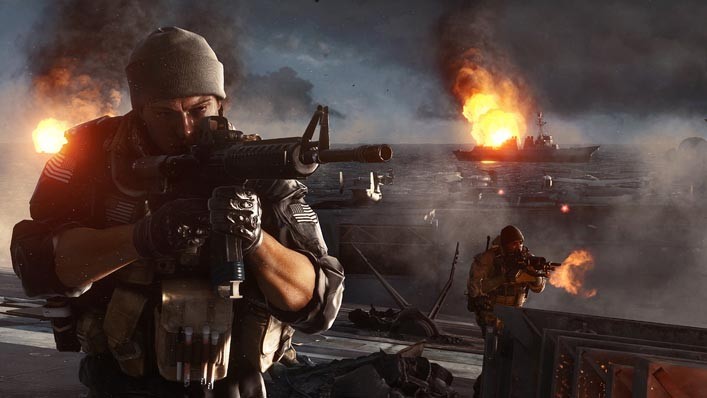Explosions. Lots and lots of explosions. They force you to duck and dodge as they roar out across the battlefield, tanks suddenly leaping into the air as RPGs violently collide into them, helicopters losing control and smashing into nearby buildings, glass raining down on you from above.
Enemies pour out onto the scene, swarming around you as you dare peek out from behind the mound of rubble serving as makeshift cover. You fumble between weapons, desperately trying to hold the line as bullets inch past your face, slotting into the wall next to you. It’s chaos.
Of course, Oculus Rift or Project Morpheus support for Activision’s Call of Duty or EA’s Battlefield series would be, above all else, a sign that VR has ‘made it’. These franchises are as mainstream as it gets, selling tens of millions of copies year-in, year-out. We’ve heard in recent weeks and months that big budget publishers will need to see significant sales of VR headsets before they jump on board though, somewhat ironically the headsets need the lure of such titles to even begin selling the desired numbers. These specific franchises may not be in the same position by the time the technology gets there, but there will still undoubtedly be an adrenaline-fueled first-person shooter (FPS) that will be used to measure VR’s success.
As for the experiences themselves, the appeal of VR is obvious. These titles strive to bring players closer and closer to the action and provide an unparalleled level of immersion. What better way to achieve this than by strapping a headset over your eyes and stepping into a fully 3D world where your head moves as if you really were the character you’re controlling? No doubt both would need extensive optimisation before VR could be implemented; we get sick just thinking about one of Call of Duty’s many past set piece spectaculars in VR, but it could be done without changing the fundamentals of the core experience.
IMAGE BY FLICKR USER BAGO GAMES UNDER CC 2.0 LICENSE
The Tech Portal is published by Blue Box Media Private Limited. Our investors have no influence over our reporting. Read our full Ownership and Funding Disclosure →







